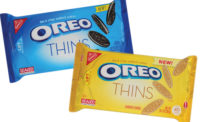It’s 2 p.m. and I’ve just eaten a snack, or maybe it was lunch?... Hard to say, because I also ate a mini-meal at 11:30.
Like many Americans, I’ve started to eat many smaller meals instead of three larger ones. The composition of the meals/snacks is changing, along with the frequency. The line between meals and snacks has grown blurry, with consumers changing their definition of how they eat. This can be a boon to a wide range of manufacturers—particularly snack producers and bakers.
Meal as snack. Snack as meal. With snack food categories totaling $124 billion in retail sales per Nielsen, New York, getting the right snack solution is big business.
It’s also important to bring the right elements into the formulation mix. According to Elaine Tecklenburg, author of “Functional Foods: Key Trend & Developments in Ingredients,” a November 2014 report published by Packaged Facts, Rockville, MD, “What we’re seeing is the convergence of two major trends—consumer desire for more protein and the growth of snacking, particularly healthier snacking.” She notes that these foods should be convenient “and contain a substantial amount of protein” in order to appeal to a broad range of consumers.
Consumers used to read labels on the lookout for less-desirable ingredients, like fat, sodium and sugar. While consumers are still concerned about detrimental ingredients, there is now a shift to consumers looking for beneficial ingredients, including protein. In fact, according to Nielsen’s 2014 Global Survey of Snacking, 31 percent of respondents say they’re looking for more protein in their snacks—an attribute they deem “very important.” This consumer hunger for protein ranks similarly to the desire for whole grains (29 percent).
Multifunctional & essential
Why the focus on protein? Boosting protein intake brings multiple benefits. Higher-protein snacks are likely to increase satiety, which helps with weight management. If your snack now has to function a bit like a meal, satiety is increasingly important. Protein can also help repair and build muscles—important for us all, but particularly vital for aging individuals and athletes. As baby boomers grow more concerned about the carbohydrate content of their foods, protein becomes the new hero in the battle for the share of stomach. And, with the increased demand for gluten-free foods, wheat alternatives that can also deliver higher protein—such as quinoa—are becoming more popular.
Various types of proteins find use in formulations these days. “Protein claims are being achieved by using individual ingredients and combinations,” says Tecklenburg, citing primarily protein ingredients as whey and milk protein concentrates and isolates, soy, pea protein and other pulse and legume sources, nuts, and seeds. “Protein blends, such as pea and rice protein used together, provide for amino acid complementation, resulting in more-complex nutritional profiles,” she notes.
Pea protein, often a key ingredient in fortified products for bodybuilders, now goes into more mainstream products. Legume-based protein sources have several advantages. These plant proteins are highly sustainable, and they meet the needs of those looking to stick to a vegetarian diet, or those with wheat or dairy allergies.
Meat and poultry are also prime building blocks for protein ingredients. “IDF has a line of ARC Concentrated Chicken Protein Powders, which are free from common allergens and compatible with snacks and baked goods, particularly those making allergen-free claims,” says Stephanie Lynch, vice president, technology, sales and marketing for the company. “They also deliver a neutral, umami flavor with no bitter aftertaste.” These ingredients, she notes, “are natural, highly digestible proteins with a PDCAAS (protein digestibility-corrected amino acid score) of one, which is comparable to whey. These concentrated chicken protein ingredients deliver all essential and nonessential amino acids and are free of common allergens, so they’re a great option for bringing protein to soy-free and dairy-free applications.” She notes they’ve used the protein powders to boost the nutritional profile of a variety of snacks and baked goods, including extruded snacks, breads and croutons, “all with fantastic results.”
Meat and poultry protein ingredients also make sense in savory snacks. “With the continued interest in high-protein snacks and the availability of proteins that lend themselves to savory systems, we would hope to see more savory snacks differentiating themselves by offering alternative sources of protein,” says Lynch. “Meat proteins provide a great option to do so, while staying on-trend with real food, clean labels and natural ingredients.”
Lynch also sees great opportunity for innovation in the bakery segment, as consumers seek better-for-you versions of traditionally indulgent foods. “By offering increased protein in breads, bagels and crackers, bakery brands can reposition themselves to fulfill the demand for delicious, healthier options,” she says.
A natural fit
According to Nielsen’s September 2014 “Snack Attack: What Consumers Are Reaching for Around the World” report, 45 percent of consumers feel it’s very important for their snacks to be all-natural—the top attribute in the survey. Susan Dunn, executive vice president, Global Professional Services, Nielsen, notes, “Demand is driven by primarily taste and health considerations, and consumers are not willing to compromise on either.”
One approach to meeting desires for all-natural is use of whole food ingredients. Alison Raban, certified food scientist, BI Nutraceuticals, Long Beach, CA, points to quinoa and chia seeds as good options for adding protein. “We love to feature quinoa for two reasons,” she says, citing the increasing consumer acceptance of the ancient grain and its growing use in gluten-free applications. “Chia seeds also make a great ingredient, providing not only protein, but fiber and omega-3.”
Egg ingredients can also add strong levels of protein, with specialized degrees of natural, local and non-GMO available. Jasen Urena, director of specialty eggs, NestFresh, Denver, notes the company’s clients increasingly ask for more transparency in their ingredients. He says that eggs provide quality protein—and that the ingredients are highly traceable. He explains that his company offers egg ingredients with a wide range of natural-leaning attributes, including Non-GMO Project verification, humane certification, USDA organic certification and kosher certification. He also notes that “customers have a great deal of confidence knowing that this protein source is coming from local farmers in their region.”
Formulation challenges
Of course, pumping up the protein can present challenges to product developers. Norris Sun, principal scientist and application manager, Cargill, Minneapolis, explains: “Proteins tend to hydrate and compete for water, which can increase the density in puffed cereals, snacks and baked products. They may inhibit dough development and make it stiff and difficult to sheet. In addition, proteins have their own unique flavor that may be difficult to mask. Finally, products with higher proteins may have a darker color due to Maillard reactions.”
In addition to the physical property and visual challenges, adding protein can also create flavor challenges. Unpleasant or off flavors can develop, requiring the need for masking agents or a modified formula. Raban recommends “working with reliable suppliers and allowing the R&D team time to optimize the levels of protein and nutrition” to meet the taste profile goals.
For products like nutrition and snack bars, product developers can add protein through a fortified coating—enrobed, drizzled or bottom-coated. Protein-enriched inclusions also might make sense for bars, or for cookies, muffins and other bakery products. According to Courtney LeDrew, marketing manager, Cargill, ingredients are available that can help manufacturers meet FDA label claims for protein content.
Protein-focused products
Products like chips and bars are seeing strong protein fortification, including both specialty and mainstream brands.
General Mills, Minneapolis, recently launched a line of Nature Valley protein bars with 10 grams of protein per serving, significantly higher than the 4 grams of protein per serving in its traditional Oats & Honey bars. Flavors include Peanut Butter and Dark Chocolate; Coconut Almond; Salted Caramel Nut; and Peanut, Almond & Dark Chocolate. The line also includes two varieties with Greek yogurt, in Mixed Berry and Strawberry flavors.
PepsiCo, Purchase, NY, has also gone high-protein via its Quaker brand. “Quaker recognizes that protein is a growing trend with consumers,” says Joe Silverman, senior marketing director, Quaker Oats, Chicago, noting that Quaker’s Protein Baked Bars offer 10 grams of protein per serving. The products, available in Oatmeal Raisin Nut and Peanut Butter Chocolate, also sport 8 grams of whole grains.
PepsiCo also saw a logical fit for protein via its Gatorade brand. A Gatorade spokesperson notes that the new Gatorade Recover Whey Protein Bar offers 20 grams of high-quality whey and milk proteins, “to help stimulate muscle growth and recovery.”The bars are available in Cookies and Crème, Chocolate Caramel and Chocolate Chip.
Simply 7 Snacks, Houston, offers a line of Quinoa Chips that tout 8–9 grams of protein per serving. Flavors include Sea Salt, Barbeque, Cheddar and Sour Cream & Onion.
Another protein-packed snack line—with various flavors of puffs and chips, including a tortilla-style chip—comes from Beanitos Inc., Austin, TX. The products have 4 grams of protein and 6 grams of fiber in every 1-ounce serving. Black and navy beans form the basis of many of the snacks.
Somersault Snack Co., Sausalito, CA, offers snack nugget chips made with sunflower seeds, sesame seeds and toasted grains that contain 6 grams of protein per serving. Flavors include Pacific Sea Salt, Cinnamon Crunch, Salty Pepper, Dutch Cocoa and Santa Fe Salsa. The company also touts that the products are high in antioxidants and fiber.
Demand for protein-packed snacks will likely continue to remain strong. “The protein market is set to continue its growth in 2015,” says Raban, “and the biggest gains will be with plant-based proteins.”
LeDrew suggests that emerging protein sources include hemp, flax and oats.
And the next frontier? Many experts point to microalgae. FDA recently issued its first GRAS approval of microalgae food ingredients to Solazyme, South San Francisco.
With an expanding array of ingredient sources for protein and a strong consumer appetite for the nutrient, protein-packed snacks and baked goods will likely remain a powerful, ongoing trend.






